Why ‘re-engagement’ feels like Groundhog Day to your visitors (and how to fix it)

In the 1993 movie “Groundhog Day,” Bill Murray’s character Phil is stuck in a time loop where he’s forced to relive the same day over and over. It’s amusing at first, but eventually he gets bored in the monotonous, inescapable reality he’s trapped in.
If we translate that movie as an analogy of how customers feel when businesses ‘re-engage’ with them, they feel trapped too, in an endless cycle of repetitive marketing spiels. The same loop of emails, ads, and reminders. Yes, they feel exactly like Phil.
But just like in the movie, there could be an epiphanous happy ending…if businesses learn from the experience.
Let’s consider 4 reasons why ‘re-engagement’ feels like Groundhog Day to your visitors, and explore some practical strategies from a CX perspective on how to fix it.
1. Generic tactics feel predictable
Most re-engagement strategies follow the same formula: send a “We miss you” email or cart abandonment message, offer a discount, and then run retargeting ads. To users, this all blends into background noise that repeats itself.
The problem isn’t just the repetition but the lack of contextual relevance. When brands fail to consider their customers' buying journeys and habits, what was meant to be a sales nudge becomes sales noise.
The fix: Use segmentation and behavioral triggers within your CRM or marketing automation platform to tailor outreach. For instance:
- Instead of sending every cart abandoner the same ‘10% discount’, create dynamic workflows that adjust based on cart value or browsing history.
- Test multi-step flows: first, a reminder, then a product benefits email, then a personalized incentive if the user still doesn’t convert.
- Leverage cohort analysis to identify segments most likely to respond to discounts versus those motivated by new features.
2. Repetitive marketing copy
Phrases like “Still thinking about it?,” “Don’t miss out,” or “Time is running out,” are all re-engagement copy that's overused across many businesses. It’s boring and lacks any sense of originality. Over time, customers stop paying attention, no matter how good a re-engagement offer is.
Another major culprit is sheer volume. Many retailers bombard inactive customers with too many messages, leading to marketing fatigue. In fact, excessive and irrelevant messaging are causing 70% of consumers to unsubscribe in just three months.
The fix: Adjust your cliché marketing copy with language that's more personalized and matches customer intent:
- Voice of customer (VoC) mining: This practice refers to the process of understanding customer needs by analyzing support tickets, surveys, reviews, and session replays to capture the exact words users use to describe their pain points.
- Contextual framing: Tie your copy to specific user actions. Example: if a SaaS user left mid-onboarding, send an email titled “Complete setup in just 2 minutes and unlock advanced analytics.” This works better than the generic line, “Come back.”
- Run unmoderated tests: Let participants read and react to your email or ad copy. Capture their emotional response, clarity ratings, and likelihood to engage.
guide
How to engage and convert prospects from every customer channel
3. Lack of emotional connection
Customers buy with their emotions. A 2023 study analyzing over 2,000 consumers found that 86% of buying choices were influenced by emotional needs.
That’s why re-engagement campaigns shouldn't just feel transactional; think discounts, urgency messages, and reminders. It should tap into their emotions by acknowledging the emotional drivers of loyalty, like trust, belonging, and recognition. If your marketing messaging feels purely transactional, then it’ll be easier for users to abandon when a competitor offers a slightly better deal.
The fix: Build campaigns that create an emotional bond and show users they are valued beyond the transaction. Practical strategies include:
- Community-driven storytelling: Share stories from your user community—like how a customer achieved success with your product—to spark relatability and pride.
- Highlight social proof: Showcase ratings, reviews, or testimonials that emphasize authenticity and reinforce trust.
- Values-based messaging: Align your campaigns with causes or values that resonate with your audience, reinforcing emotional connection.
- Emotional validation: Run tests where participants react to emotionally oriented copy and visuals. Gather feedback on whether the tone feels authentic, supportive, and motivating.
4. No sense of progress
When users churn, it’s often because the product wasn’t meeting their needs. Re-engagement campaigns need to highlight actual updates and progress to their buying journey. Otherwise, customers will think that nothing’s changed, because there’s nothing new.
This problem is further amplified by silos in internal teams. Product teams may be actively rolling out new features, fixes, or improvements, but if those updates aren’t integrated into lifecycle marketing workflows, customers never hear about them.
The fix: Make product progress central to your re-engagement messaging. Practical strategies include:
- Feature update campaigns: Use changelogs, release notes, or in-app modals to show what’s new since the user left.
- Progress tracking: If a user didn’t finish setup or a course, highlight completion stats like, “You’ve completed 70%—just two lessons left.”
- Customer proof points: Share testimonials or case studies showing how new updates solved real user problems.
- Version-based outreach: Trigger campaigns automatically when a major product release goes live, ensuring lapsed users know what’s improved.
How to break the Groundhog Day cycle (a quick guide)
Escaping the “Groundhog Day” effect means designing re-engagement strategies that feel fresh and human. The key is to combine customer insights with technical execution.
Here are a few quick tips:
1. Adopt a cross-channel retention strategy
Campaigns often feel repetitive because channels act in silos. An email team sends one thing, while SMS or push repeats the same message. The fix is a coordinated plan where channels complement each other. A lapsed app user may respond best to an in-app notification, while a lapsed store shopper might need an SMS offer. By unifying customer data and setting up suppressions, brands can avoid spamming and deliver thoughtful, sequenced reminders instead.
2. Leverage AI-driven triggers and predictive analytics
Repetition also happens when brands only act after churn is obvious. Predictive AI changes that by flagging when customers are likely to lapse and tailoring timing and content to each individual. Instead of a generic “we miss you” email at day 60, AI can adapt flows to match real behavior patterns. This keeps re-engagement proactive and personal.
3. Integrate win-back into the overall journey
Break the reset cycle by embedding win-back into the lifecycle itself. That means creating journeys for lapsed customers by acknowledging their absence, reintroducing value, and rewarding return. Instead of hitting the same reset button, brands move relationships forward. When reactivation campaigns feel like a natural part of the customer journey, suddenly its not Groundhog Day anymore, it’s a sequel worth watching.
Want the full guide on how to engage customers from every customer channel? Check it out here.
podcast
Every (buying) decision is emotional
Turning re-engagement into progress
Customers don’t want reruns. Move past the “same old, same old” and roll credits on repetitive tactics with journeys that move forward. Moving beyond generic tactics and repetitive copy can flip the script and turn "re-engagement" from an endless rerun into an opportunity to build stronger relationships.
The key is pairing smart data and automation with real customer insight, ensuring every message feels timely, relevant, and human.
Key takeaways
- Generic tactics blur together. Use segmentation and adaptive workflows to avoid predictability.
- Copy fatigue is real. Mine customer language and test messaging to replace clichés.
- Relevance wins. Personalize campaigns with dynamic recommendations and lifecycle-specific content.
- Progress matters. Highlight new features, updates, or milestones to prove returning is worthwhile.
FAQ
Q: How can I measure if my re-engagement campaigns are effective?
A: Track open rates, click-throughs, conversion rates, and unsubscribe data alongside qualitative feedback from UserTesting sessions. Look for improvements in both metrics and user sentiment.
Q: What role does UserTesting play in optimizing campaigns?
A: UserTesting enables you to validate tone, timing, and emotional impact before launch. Teams can run unmoderated tests, side-by-side message comparisons, and sentiment analysis to refine campaigns.
Q: How can I avoid channel fatigue?
A: Diversify outreach across email, push notifications, SMS, and in-app prompts. Use attribution and customer feedback to identify where each segment is most responsive.
guide





